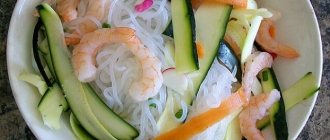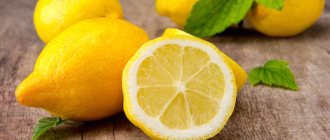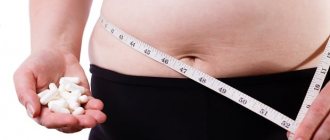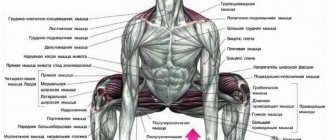People who have been on diets for a long time and are overweight dream of always eating to their fill, but not gaining weight.
Is something like this possible? The Japanese claim that there is nothing special about this way of eating and have been using it for many centuries. In the Land of the Rising Sun, a common plant called konnyaku is used as food. In European style, it can be called “snake palm” or “devil’s tongue,” which was given to it due to the strange appearance of its flower. It can really scare an unprepared person. However, there is nothing dangerous or scary about this plant. Many dishes are prepared from it, including shirataki noodles, and we will tell you what it is and what it is eaten with in our article.
What is shirataki
Shirataki, or Japanese noodles, is a popular product of oriental cuisine. It is a long and thin translucent white noodle, without taste or distinct odor. Unlike traditional noodles, Japanese noodles are made not from wheat flour, but from the root of the konjac plant, also known as konnyaku.
Konnyaku is a heat-loving crop, distributed mainly in Japan, China and Southeast Asia. Usually grows in the mountains. Due to its unusual appearance, this plant received other popular names. The local population calls amorphophallus konjac the devil's tongue or snake palm. The root of this plant, which is actually used for shirataki, is shaped like a large beet (can grow up to 4 kg). It can be consumed both raw and processed. Typically, young tubers are dried and ground into flour, from which shirataki is then prepared. Snake palm roots are composed almost entirely of poorly digestible fibers. For this reason, Japanese noodles have gained incredible popularity among people watching their figure.
Content:
- What is shirataki
- Nutritional value and chemical composition
- Benefits of Shirataki
- How to lose weight with noodles
- Harm and side effects of Japanese noodles
- How to cook and serve
Low carb keto pasta
By switching to a keto diet, you won’t have to say goodbye to Italian cuisine. There are quite a few recipes for keto pasta made from available ingredients. To prepare one of these you only need 2 ingredients. To prepare you will need:
- grated Mozzarella cheese – 200 g;
- fresh egg yolk – 1 pc.
| KBJU of the finished product: | |
| Total calories | 353 Kcal |
| Calories from fat | 198 Kcal |
| Squirrels | 33 g |
| Fats | 22 g |
| Carbohydrates | 3 g |
By the way! Mozzarella is a prominent representative of classic Italian cuisine. Due to its composition, this product is ideal for a keto diet.
Preparation:
Melt the cheese in the microwave and stir until smooth. Mix the yolk into the slightly cooled mixture. The finished dough should be distributed on parchment and covered with another sheet on top. The dough must be rolled out through paper. Then, you need to remove the top sheet of parchment and cut the layer into thin strips, like paste. The product must be refrigerated for at least 6 hours.
Ready-made Italian keto pasta can be eaten without additives or supplemented with tomato, cream, or any other favorite sauce.
Attention! Cook the finished low-carb pasta in boiling water for no more than 40-60 seconds. If you keep the pasta in boiling water, it will boil.
Nutritional value and chemical composition
In Asian countries, shirataki is one of the national dishes and is almost as popular as rice. If someone tried to find another name for Japanese noodles, more familiar to the European ear, then it would probably not be better to find a literal translation of the original name. “White waterfall” is exactly how the Japanese word “shirataki” is translated. The product really looks like the cascading waves of a waterfall. White, translucent thin pasta, almost tasteless, but have a characteristic smell. This is explained by the fact that shirataki contains only two components: konnyaku root and water. Some manufacturers also add salt. The resulting mixture is boiled and then poured into noodle or rice molds.
Shirataki contains a lot of water - almost 97% of the total composition, and only 3% fiber.
These are the lowest calorie noodles in the world. It seems that only water contains fewer calories. 100 g of noodles contain only 9 kcal. This is almost 12 times less than in a green apple, and we dare to remind you that it is considered very low-calorie. But in fairness, it must be said that Japanese noodles lack not only calories. It also does not contain vitamins, minerals, fats, proteins (well, unless you add them during the cooking process), but there is a huge amount of fiber and some carbohydrates. But don't be afraid. Shirataki contains only 2.3 g of carbohydrates per 100 g of product, which will not affect your figure at all.
Separately, it is necessary to say about the characteristics of fiber obtained from snake palm. It is an insoluble substance that, when it enters the intestines, swells, creating a feeling of fullness in the stomach. But besides this, while konjac fiber remains in the human body, it absorbs toxins, excess cholesterol and glucose, and is then completely eliminated.
What kind of pasta can you eat on a keto diet?
So, if someone says that eating pasta is strictly forbidden on a keto diet, they are wrong! You just need to choose the appropriate options. It is important that the product contains a small amount of carbohydrates (no more than 5-10 grams per serving). And, of course, it is necessary that low-carb noodles, noodles, and spaghetti look and taste like their once-loved, non-keto counterpart.
By the way! Why do people like pasta so much? Because they have an attractive shape, pleasant structure, appetizing texture. But the pasta itself does not have a pronounced taste. Your favorite pasta almost always benefits from additional ingredients and sauces! It turns out that the main secret of the taste of pasta lies in its combination with your favorite additives.
Benefits of Shirataki
You can often read on the Internet that shirataki is a very healthy product. They say that he:
- reduces cholesterol levels in the body;
- improves digestion;
- reduces the concentration of sugar in the bloodstream;
- affects intestinal motility.
Is this really the case or is it just a trick by advertisers? To understand why Japanese noodles are useful, you first need to take a closer look at them. Apart from a special type of fiber, there is nothing else in shirataki. But it is fiber that provides the main benefits of this product. Although the average serving of Japanese noodles contains no more than 3 g of fiber, this is enough for the body to feel its benefits.
Dietary fiber obtained from konjac tubers helps lower cholesterol and blood sugar. This means that Japanese noodles are not only allowed, but also beneficial for people with diabetes and certain cardiovascular diseases. Fiber-rich snake palm noodles are an excellent way to improve intestinal motility. For this reason, shirataki is beneficial for people with constipation, hemorrhoids, or diverticulitis. Speaking of intestines. Researchers have proven that this product of Japanese cuisine, or rather the fiber in its composition, has prebiotic properties. In other words, it promotes the formation of proper microflora in the intestines and prevents dysbiosis.
Do not forget that Japanese noodles do not contain wheat flour, which means they do not contain gluten, which can cause allergies in some people. Thus, shirataki can be a real salvation for people with celiac disease.
Keto almond flour pasta
Finely ground almonds will help you do without flour and eat deliciously on a keto diet! This is a very keto friendly product that can be made into just about anything. Keto pasta made from almond flour will become a desirable dish on the table of those losing weight and caring about health.
By the way, very useful! Almonds are a source of Omega-3 fatty acids. These substances prevent clogging and blockage of blood vessels, thereby preventing the development of many vascular diseases.
How to lose weight with noodles
If we are talking about ordinary noodles, then no way. But if you replace the traditional product with super-dietary Japanese noodles, then it’s very possible. Some people on the noodle diet won’t even have to radically revise their diet. In order to start the weight loss process, it is enough to replace regular pasta or potatoes with shirataki.
The most famous weight loss program in which shirataki is held in high esteem is the Dukan diet. For people who follow it, shirataki can be consumed in unlimited quantities. By the way, in Japan, more than 200 tons of this “pasta” are eaten annually and, it must be recalled, you rarely see overweight people in this country.
As already mentioned, Japanese noodles contain almost no calories, carbohydrates, fat, sugar, protein or gluten. And those carbohydrates that are in the product are digested very slowly in the small intestine. But the most important thing for those losing weight is that shirataki contains a special type of fiber known as glucomannan. When this substance combines with water, it swells very strongly, increasing to almost 17 times its original volume. In the human body, everything happens approximately the same way, and after eating Japanese noodles, a gel-like mass is formed in the stomach, which maintains saturation for a very long time. In addition, dietary fiber slows down the body's production of ghrelin, also known as the hunger hormone. And by comparing these data, it becomes clear: you can really lose weight very effectively using Japanese “pasta.”
Low Carb Keto Almond Flour Noodles Recipe
You can prepare almond noodles at home.
For this you will need:
- almond flour – 130 g;
- chicken egg – 1 pc.;
- salt - to taste;
- Apple vinegar.
| Nutritional value per 100 grams of finished product: | |
| total calories | 352 Kcal |
| squirrels | 14 g |
| fats | 26 g |
| carbohydrates | 16 g |
Preparation:
Beat the egg well and mix with almond flour. Apple cider vinegar is also added there. If required, you can add a little water. From these components you need to knead a tight dough.
To simplify the process of obtaining a thick mass, you can use xanthan gum (1-2 grams).
Harm and side effects of Japanese noodles
Eating too much Japanese noodles can cause diarrhea or bloating in some people. However, shirataki is considered safe to eat in almost any serving size. But as with any type of fiber, glucomannan needs to be introduced into your diet gradually, starting with small portions.
People who are underweight, during intense physical activity, or after serious illness should not overindulge in shirataki. In these cases, Japanese noodles are not able to provide the body with those beneficial substances that it needs most. Therefore, it is better to replace shirataki with other products with a richer chemical composition.
People taking medications should be aware that glucomannan impairs the body's absorption of certain medications, including medications for diabetics. For this reason, it is best to take all medications an hour before eating shirataki or 4 hours after.
How to replace pasta on a keto diet?
Instead of wheat pasta that is useless for keto, you can choose one of the options below.
- egg noodles (not to be confused with those sold in the store);
- vegetable spaghetti;
- shirataki vermicelli;
- products made from almond flour.
All these options are prepared according to low-carb recipes from simple and quite affordable products.
How to cook and serve
Many people may not like the specific smell of shirataki. You can get rid of the characteristic aroma by soaking the noodles in cold water for a while or at least rinsing them in it. But this is not the only way to “cleanse”. You can get rid of the smell by boiling the product for 2-3 minutes in salted water. By the way, after this the noodles will become a little softer and more elastic. You can give the product elasticity in another way: fry the washed noodles for several minutes in a heated frying pan without fat.
Many stores sell not only dry shirataki. It is not uncommon to see noodles in a marinade. To prepare such a product, the marinade should be drained, the noodles should be washed under running water and then boiled or steamed with boiling water.
Shirataki itself is almost tasteless, but that’s part of its charm. This product easily absorbs the smell of spices and other components of the dish. Due to its neutral taste, Japanese noodles can be combined with a variety of foods. It can serve as the basis for soups and main courses, and be part of cold appetizers and various salads.
A typical Japanese-style vegetarian lunch is a plate of shirataki with tofu seafood and vegetables. Many people add konnyaku noodles to miso soup or serve as a side dish with beef, fish or chicken. Shirataki goes well with vegetables, especially broccoli or cauliflower. But it would be wrong to say that shirataki can be the basis of exclusively oriental recipes. Many people use these low-calorie noodles as a dietary replacement for Italian spaghetti. Some gourmets prefer to cook shirataki with cream or sour cream, adding a little bell pepper, carrots, herbs and spices to the noodles. To improve the taste of the product, you can always add garlic, ginger, soy sauce, paprika, curry, olive or sesame oil, and sesame seeds.
It is good to add oregano or coriander to Japanese noodle dishes.
But to prevent shirataki dishes from being harmful, you need to remember the rules for storing Japanese noodles. The product can be stored in airtight containers at room temperature for several months. The contents of an open package should be eaten immediately and kept in the refrigerator for no longer than 1-2 days.
Egg keto alternative
Another egg-based option to replace pasta is an omelet. To prepare, you need to beat 3-4 eggs with salt. This mixture must be poured onto a baking sheet greased with vegetable oil and placed in an oven preheated to 160 degrees. Baking time – 5-7 minutes. As soon as the omelette sets, it needs to be removed from the oven and cooled. Cold omelette is cut into thin strips and served with herbs or any suitable sauce.
Recommended by topic
100+ KETO foods: what you can and cannot eat Keto cakes: 9 best recipes
For this dish, it is best to use pasta made from almond or coconut flour.
Preparation:
Prepared (cooked) keto nut flour pasta should be mixed with the beaten egg and yogurt mixture. Add sweetener and distribute it evenly, mixing with the mixture. Transfer the prepared casserole base into a mold greased with any suitable fat base (coconut, olive or butter). Place the casserole dish in an oven preheated to 180 degrees. Bake for 20 minutes. This creamy keto pasta casserole made with almond flour, eggs and yogurt is perfect for a keto breakfast or dinner.
Let's talk about konnyaku
If French cognac can dull the fear of gaining weight, then amorphophallus tubers can dull the feeling of hunger. In Russia, people interested in the topic of rapid weight loss learned about Japanese noodles from an authoritative person - the famous nutritionist Pierre Dukan. He spoke about this amazing plant at one of the spring conferences.
For residents of Asian countries, konjac (konjac, cognac) is considered a traditional product, used not only in cooking, but also in everyday life. Thanks to the porous structure of the roots, sponges are made from the plant, which are famous for their phenomenal property of thoroughly cleansing the face.
In the kitchen, konnyaku has completely different functions: it is used as a gelling agent to thicken dishes and desserts, and the famous Shirataki pasta is made from konjac flour. The noodles perfectly absorb the aroma of the sauce, in addition allowing you to forget about the feeling of hunger for a long time - and all this without harm to the body and figure.
Vegetable lunch
- spaghetti packaging;
- sweet pepper – 1 pc.;
- hot pepper – 1 pc.;
- green onion feathers - 2 pcs.;
- tomato – 1 pc.;
- olive oil – 15 ml;
- ground paprika and other spices to taste.
- Open the package of spaghetti, drain the brine, and boil the product itself in slightly salted boiling liquid for 3 minutes. When ready, drain in a colander.
- Finely chop 2 types of pepper and fry, after sprinkling with paprika and other spices.
- Add greens, diced tomatoes and spaghetti that have cooled by this time to the hot peppers.
Advice! Spicy food enhances the metabolic process, but for stable stomach function, the dish prepared according to the proposed recipe should not be consumed too often. If you like a vegetable lunch, you can cook it without hot pepper.
Source
Pumpkin puree soup with spaghetti “Shirataki”
Recipe ingredients required:
- tofu – 100 g;
- Shirataki packaging;
- pumpkin – 0.5 kg;
- bell pepper – 1 pc.;
- cream 9% fat - as much as needed in the process.
- Drain the brine from the spaghetti and place the product in a colander;
- Cut the peeled pumpkin into slices, add liquid and simmer until soft;
- Mash in a blender and pour in a small amount of cream;
- Grind the pepper, cut the tofu into slices and add to the pumpkin;
- Bring the mixture to a boil, add spaghetti and finish cooking after 4 minutes.
Keto pasta carbonara
Another real gift for keto diet followers is keto pasta carbonara! It is not difficult to prepare such a dish. The taste of the finished product is in no way inferior to the Italian classics.
By the way! The famous pasta carbonara is just under half a century old. This dish is a traditional pasta option for the Lazio region, centered on Rome.
To prepare you need:
- bacon – 150 g;
- Shirataki noodles – 30 g;
- chicken egg – 3 pcs.;
- Parmesan cheese – 95 g;
- garlic – 1 g.;
- olive oil – 45 g.
| KBJU of the finished product: | |
| Total calories | 142.4 Kcal |
| Fat calories | 259 Kcal |
| Squirrels | 16.4 g |
| Fats | 28.8 g |
| Carbohydrates | 2.2 g |
Preparation:
Cut the bacon into cubes and fry in olive oil until golden and crispy. Add pre-prepared Shirataki noodles to bacon and heat in oil, mixing evenly with bacon.
Attention! While the noodles are heating, stir them very often. This is important for uniform heating of the product.
Once the Shirataki and bacon are warm enough, turn off the heat and transfer the ingredients to a bowl. Then, beat the eggs in a separate container with ¾ of the grated Parmesan.
As soon as you achieve a uniform consistency, you immediately need to pour the sauce into the pasta. While mixing thoroughly, it is important to ensure that the eggs do not curl, but gently envelop the noodles.
Before serving, keto carbonara pasta is decorated with the remaining grated cheese and parsley (optional).
Culinary wisdom! Pasta is a dish that is never prepared for future use. Pasta tastes good only when fresh, immediately after cooking. It is not recommended to cool and reheat Italian classics.
Tender keto casserole made with pasta, eggs and creamy yogurt
For dinner or breakfast, you can prepare a very tasty and tender keto casserole from pasta, eggs and creamy yogurt. To prepare you will need:
- almond or coconut flour pasta – 70 g;
- eggs – 7 pcs.;
- creamy yogurt or kaymak – 140 g;
- sweetener - to taste.
| KBJU of the finished product: | |
| total calories | 216 Kcal |
| squirrels | 14.4 g |
| fats | 16 g |
| carbohydrates | 2.5 g |
General cooking principles
The love of Americans and Europeans for the Asian product is due to the fact that it resembles pasta. However, don't expect the usual pasta taste from it. In terms of organoleptic qualities, Shirataki noodles resemble the well-known funchose.
Shirataki noodles are sold in health food stores and are most often sold with the addition of soy. In this case, please note that, compared to the original, the konjac-soy product has a different calorie content and nutrient composition. Asian no-carb vermicelli should be stored in a cool place.











